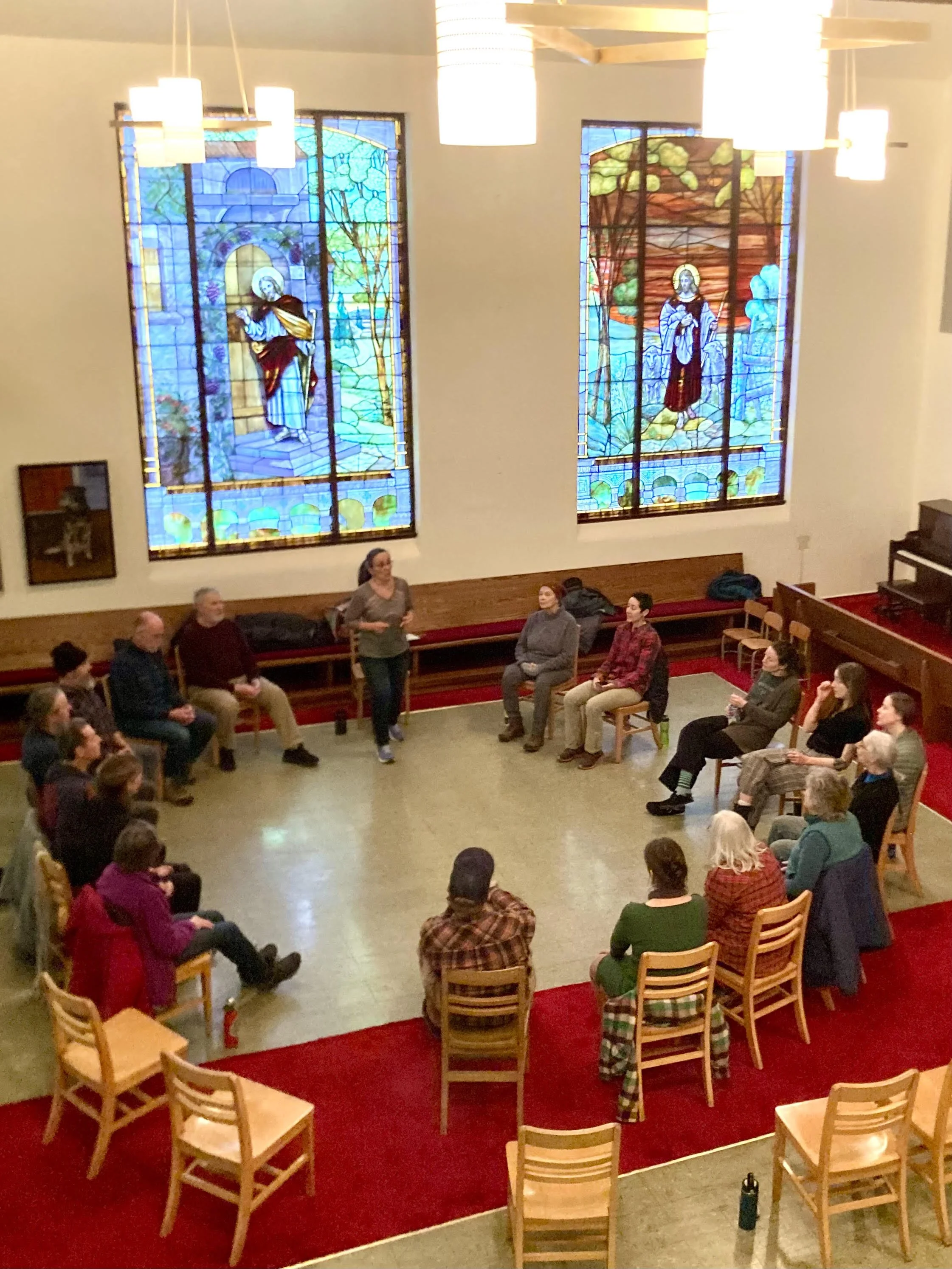So you want to join a song circle?
Who leads the song circle at SOLCA?
Generally, community song circles are led by song leaders who have learned songleading in the oral tradition from others. Hella Wartman is our SOLCA community song circle leader. She learned song leading from her teacher, Barbara McAfee, who currently leads song circles in the Twin Cities and Marine on St. Croix. Hella also completed Lisa Littlebird’s Songleader Flight School 8 years ago, and has led close to 100 song circles since in the Twin Cities and in Duluth.
What happens at the song circle?
We generally follow the following structure:
Opening song
Brief orientation
Opening circle activity; often includes going around the circle to say or sing your name
Learning & singing 8-12 songs
Announcements or reminders
Closing song
We don’t take breaks; participants take breaks if they need to, and most bring a container of water so they can stay hydrated while singing.
What kinds of songs do you sing?
Many of the songs we sing are being written and passed along song circle to song circle all around the world. Some examples can be found in the following online libraries:
What is Community Song Circle at SOLCA?
What is it like to sing in the SOLCA Sanctuary space?
The SOLCA Sanctuary space has wonderful acoustics for blending voices, including duos, small groups, and large groups. We have access to folding chairs and have lots of room to expand the circle and/or move around. Accessibility issues can be addressed with prior notice.
At SOLCA, the community song circle warmly welcomes and invites all voices to join, regardless of any prior singing experience or skill level. Participants typically sit, and sometimes stand, comfortably in a circle to promote a sense of equality and connection.
Songs are learned and remembered entirely through oral tradition, guided by a dedicated song leader who encourages participation. The repertoire is carefully chosen to include songs that are easy and accessible for anyone to sing, featuring a variety of styles such as rounds, call and response, chants, layered songs, and unison pieces.
This intergenerational group usually sings without the use of instrumental accompaniment, although on occasion a drum or Shruti box may be introduced to enhance the experience. The main focus remains on singing together as a unified community rather than preparing for performances outside the circle.
Currently, SOLCA’s community song circle stands as one of the few such gatherings in the Duluth area and continues to thrive, having welcomed groups of up to 35 participants at a time.


